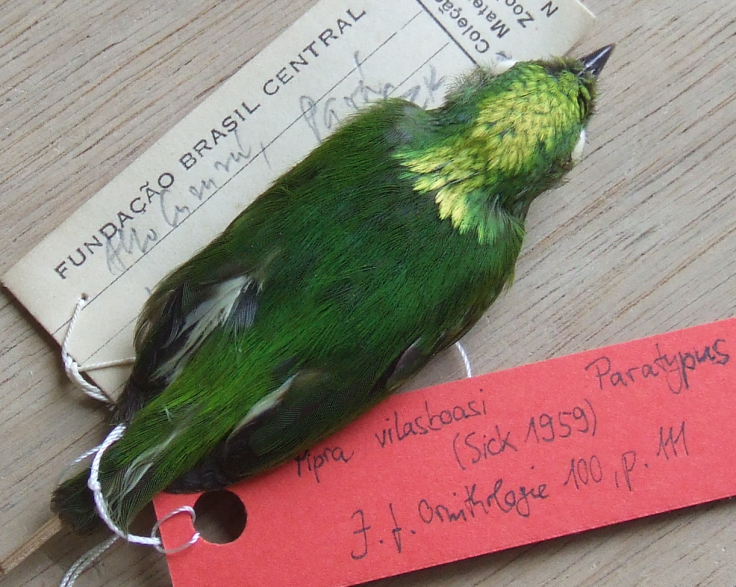Meet the golden-crowned manakin: Amazon's first known hybrid bird species
The first hybrid offspring was likely born around 180,000 years ago.

The golden-crowned manakin, the elusive bird that lives in south-central Amazon with its distinctive yellow feathers, actually belongs to a hybrid bird species – the first-ever to be found in the rainforest.
The bird, first spotted in 1957, is the long-lost offspring of the opal-crowned manakin and snow-capped manakin species, a series of genetic studies conducted by researchers from the University of Toronto, Scarborough, have revealed.
"While hybrid plant species are very common, hybrid species among vertebrates are exceedingly rare," said Jason Weir, lead author of the study.
Though the golden-crowned manakin lives far off from its parent species, the researchers think it may have separated during a past ice age when rainforest coverage contracted and wide rivers formed as natural barriers.
"Without geographic isolation, it's very likely this would never have happened because you don't see the hybrids evolving as separate species in other areas where both parental species meet."
The group made the discovery after launching two separate expeditions to Brazil. They collected genetic and feather samples and sequenced a large portion of the golden-crowned manakin's genome.
The findings, which are to be published in the journal PNAS, revealed that 80% of the golden-crowned manakin's genome came from the opal-crowned manakin, and the remaining 20% from snow-capped. The group posits that the first hybrid offspring was born around 180,000 years ago when birds from the two species mated.
In terms of appearance, the three species look very much similar, except for one difference -- the crown of feathers. The golden-crowned manakin, as the name suggests, dons a crown of dull, yellow feathers while its parents feature bright snow-white and iridescent feathers – each unique to both of them.
To understand this discrepancy, the researchers analysed the keratin structure – the protein responsible for creating the highly reflective feather colours – of all the three species and found that an intermediate mix from both parents led to their offspring's dull feathers.
"The golden-crowned manakin ended up with an intermediate keratin structure that does a poor job of making either the brilliant white or the reflective iridescence of the parental species," said Weir. The unique bird initially had duller, white or grey feathers which turned yellow as it evolved with time, according to the researchers.
The International Union for Conservation of Nature has classified the golden-crowned manakin as a threatened species, which could become extinct due to habitat loss caused by clearing of rainforests for logging and cattle-ranching.





















